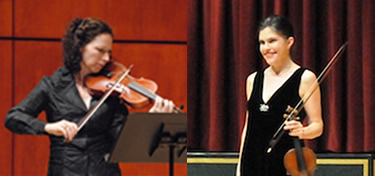One approaches an occasional piece with more than a little trepidation. Will it be dutiful note-spinning that will quickly be retired to gather dust on the library shelves? Will an earnest and leaden spoken text suck the life out of the score in performance? We first became aware of NCSA School of Music Interim Dean Lawrence Dillon when we reviewed a delightful Albany CD of his Chamber Music. What a relief to find intriguing scores that were also imminently listenable for a general audience! The program for the October 18 concert in the Stevens Center had only the barest information other than the list of works played and personnel involved, but a brief program note was posted at the NCSA performance calendar website. It describes Wright Flight – A Symphonic Narrative as “seamlessly blend(ing) an original orchestral composition with live narration and historic photographs projected on a film screen.” Dillon is the NCSA’s composer-in-residence; he “developed the concept and script and wrote the music… for this tribute to the events of December 17, 1903.” The composer says he “wanted to write this piece because I was inspired by the story of two brothers who mustered together the imagination, scientific study and hard physical labor to achieve their dreams.” This commissioned work provided valuable experience for three Schools of the NCSA – Drama, Design and Production, and Music. Serge Zehnacker conducted the Solisti Symphony, a large chamber orchestra that played with a precision that belied their youth. With voices miked, three actors portrayed the two brothers and a sea rescue squad member; Jerzy Gwiazdowski and John Patrick brought Wilbur and Orville, respectively, to life, and Will Rogers’ Down East twang made for an engaging John T. Daniels, a handy man and narrator. Luckily both brothers wrote extremely literate and witty letters that brought their efforts to dramatic life.
Almost all of the photos used were taken by the Wright brothers or members of their family, but the world-famous picture of the Wright brothers’ airplane in powered flight was taken by Daniels as he fell back in astonishment. Dillon’s score effectively supports the drama, and a recurring soaring figure underlines the sense of flight. A letter describing a plague of mosquitoes gave the composer a chance for some memorably lively music in a very inventive “scherzo.” There was a welcome absence of N.C. “First in Flight” boosterism. The work might well find approval in Akron, Ohio, since the character Rogers opines that about all they had at Kitty Hawk was “wind and sand.” This work premiered earlier this year during the NCSA Illuminations series at Roanoke Island Festival Park. Wright Flight is an engaging way of learning about the scale of the Wright brothers’ technological breakthrough and the extent of their curiosity and their sheer hard work.
Zehnacker opened the concert with an alert and carefully phrased account of Beethoven’s Symphony No. 4 in B-flat, Op. 60. The interpretation was well within the current standard; it was most engaging and satisfying, with very vital playing from the students. Ensemble was tight and the sense of rhythm was contagious. Radoslav Prager was the heroic bassoon soloist, appearing significantly in all four movements. The second movement, with its gorgeous melody above a tricky rhythm, was winning. It had a fine solo from clarinetist Corey Quinton as well as skilled additions from flutist Peter Shanahan, oboist Anna Lodico, and hornist Clark Matthews.
The too seldom heard Italian Serenade, for small orchestra (1892), by Hugo Wolf, proved a delight, with many solo opportunities for that neglected inner voice, the viola, played fervently by Johanna Strunz. She had a delicious duet with flutist Shanahan, who later had one with oboist Lodico. A rich tone characterized Tomas Koci’s cello solo. The juxtaposition of Matthew’s mellow horn followed by the unusual combination of cellos and bassoons was memorable.












